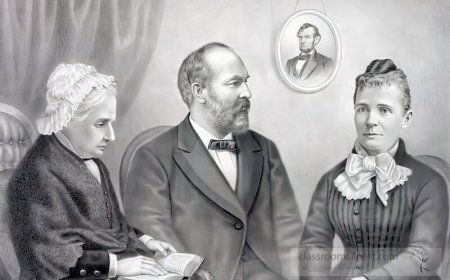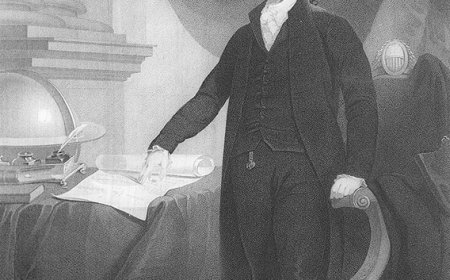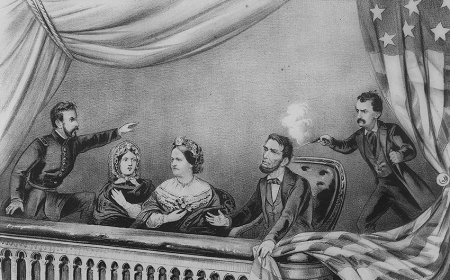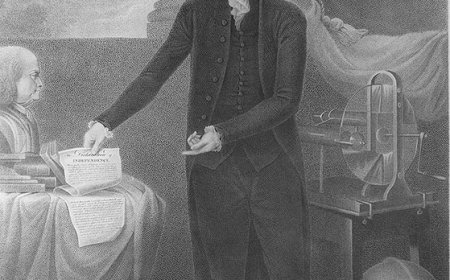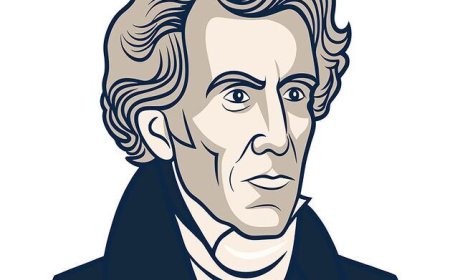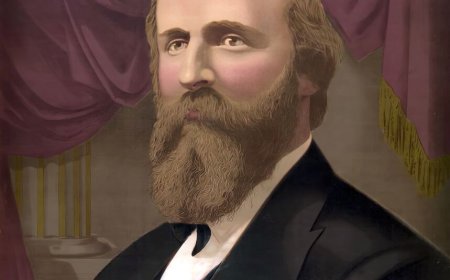Millard Fillmore Biography for Students | The Compromise of 1850 & a Nation Divided
Learn about Millard Fillmore, the 13th President of the United States who stepped into office after President Taylor’s death. Discover his role in the Compromise of 1850, his struggles to hold the country together, and his lasting legacy—plus vocabulary, fun facts, a quiz, and a kid-friendly summary.
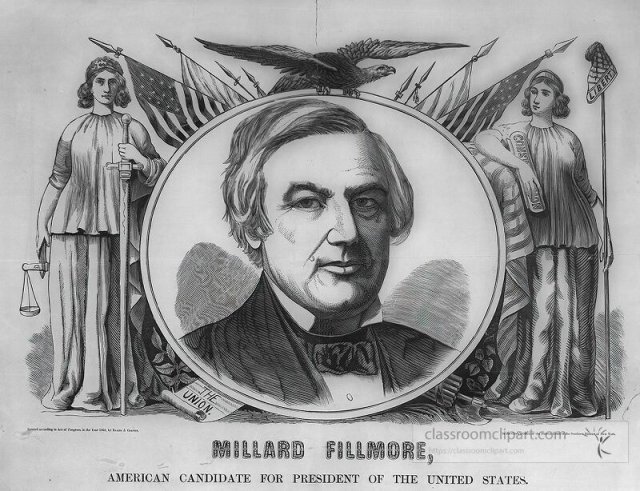
🇺🇸 Millard Fillmore Biography for Students | The Compromise of 1850 & a Nation Divided
🧭 Introduction
Millard Fillmore was the 13th President of the United States, serving from 1850 to 1853. He became president after Zachary Taylor died suddenly while in office. Fillmore is best known for supporting the Compromise of 1850, a group of laws that tried to ease tensions between free and slave states. Although he hoped to preserve peace, some of the laws—especially the Fugitive Slave Act—caused even more division. Fillmore’s presidency came at a turning point in American history as the nation moved closer to the Civil War.
👶 Early Life and Education
Millard Fillmore was born on January 7, 1800, in a log cabin in Cayuga County, New York. He grew up in poverty and worked on his family’s farm. Unlike many presidents before him, Fillmore did not come from a wealthy or famous family.
He worked hard to educate himself. He read books, apprenticed as a cloth maker, and later became a lawyer. He studied law at night while working during the day and was eventually admitted to the New York bar.
His rise from poverty to the presidency made him a symbol of the “self-made man.”
🏛 Political Career Before Presidency
Fillmore became active in the Whig Party, which supported a strong Congress and improvements like roads, canals, and schools. He believed in compromise and careful leadership.
Before becoming president, he served as:
- Member of the New York State Assembly
- U.S. Representative from New York
- Chairman of the House Ways and Means Committee
- Vice President under Zachary Taylor
He was not well-known nationally, but his calm and steady style made him a safe choice as vice president in the 1848 election.
🇺🇸 Presidency Overview
On July 9, 1850, President Zachary Taylor died suddenly, and Millard Fillmore became the 13th president. He faced an intense national crisis: the U.S. had gained new land from the Mexican-American War, and the country was deeply divided over whether slavery should be allowed in those territories.
To deal with this, Fillmore supported the Compromise of 1850, which included:
- California joining the Union as a free state
- Utah and New Mexico territories deciding on slavery by popular vote
- Ending the slave trade in Washington, D.C.
- A new, stronger Fugitive Slave Act, requiring citizens to help catch escaped enslaved people and return them to their owners
Fillmore believed this compromise would keep the country together. It temporarily reduced conflict, but the Fugitive Slave Act angered many in the North and increased resistance to slavery.
⚖️ Domestic Policies and Programs
The Compromise of 1850 was the centerpiece of Fillmore’s presidency. While it delayed the Civil War, it also had serious problems:
- The Fugitive Slave Act was extremely unpopular in the North. People were arrested and sent back into slavery without a trial.
- It strengthened the abolitionist movement, as more people became upset about the treatment of African Americans.
- Fillmore enforced the law, believing it was his duty—even though it hurt his popularity in the North.
Fillmore also:
- Helped develop the transcontinental railroad plan
- Supported trade and industrial growth
- Strengthened the U.S. Navy and shipping power
He did not run in the 1852 election as a Whig candidate. Instead, his party nominated Winfield Scott, who lost to Franklin Pierce.
🌍 Foreign Policy and Global Relations
Fillmore believed in expanding U.S. influence overseas but wanted to avoid war. His key foreign actions included:
- Opening trade with Japan: Fillmore sent Commodore Matthew Perry to explore opening diplomatic relations. Though the treaty was signed after Fillmore’s presidency, he helped start the effort.
- Maintaining peace with Britain and France, despite tensions in Canada and the Caribbean
- Supporting American expansion into the Pacific region for trade and military advantage
His efforts showed that the U.S. was beginning to think of itself as a global power.
🧾 Legacy and Historical Impact
Millard Fillmore is often ranked in the lower half of U.S. presidents, mostly because of his support for the Fugitive Slave Act, which caused harm and divided the country.
However, he is remembered for:
- Trying to preserve the Union during a dangerous time
- Being the last Whig president
- Encouraging global trade and naval growth
After leaving office, Fillmore ran for president again in 1856 as a member of the Know-Nothing Party, which opposed immigration. He lost the election and retired from politics.
👨👩👧 Personal Life and Family
Millard Fillmore married Abigail Powers in 1826. She had been his teacher and shared his love for books and learning. They had two children. Sadly, Abigail died shortly after leaving the White House.
Later, Fillmore married Caroline McIntosh, a wealthy widow. He lived quietly in Buffalo, New York, where he helped start the University at Buffalo and supported libraries and hospitals.
He died on March 8, 1874, at the age of 74.
💬 Famous Quotes
“The law is the only sure protection of the weak and the only efficient restraint upon the strong.”
Fillmore believed laws should protect everyone equally, though many questioned whether the laws of his time were fair.
“God knows that I detest slavery, but it is an existing evil…”
This quote shows how Fillmore personally disliked slavery but still supported laws that protected it.
💡 Interesting Facts About Millard Fillmore
- He was the last Whig president and the last president not from the Democratic or Republican parties.
- He started life in a log cabin and became president—a true self-made man.
- His first wife, Abigail, started the first White House library.
- He installed the first bathtub and kitchen stove in the White House.
- His second campaign was with the anti-immigrant Know-Nothing Party, which was controversial.
📚 Vocabulary Words
| Word | Definition |
|---|---|
| Compromise of 1850 | A set of laws passed to reduce conflict over slavery in new territories |
| Fugitive Slave Act | A law that required people to return escaped enslaved individuals to their owners |
| Abolitionist | A person who wanted to end slavery |
| Popular Sovereignty | The idea that people in a territory should decide for themselves whether to allow slavery |
| Whig Party | A political party that supported a strong Congress and modernization, active in the early 1800s |
👧 Kid-Friendly Summary
Millard Fillmore was the 13th president of the United States. He became president when Zachary Taylor died in office. Fillmore tried to keep the country together with a group of laws called the Compromise of 1850. One of those laws made people return escaped enslaved people, which upset many people and caused even more problems. He worked hard to stop fights between the North and South, but his decisions didn’t make everyone happy. After leaving office, he helped start a college and stayed active in his community.
✅ Interactive Quiz
Q1: What number president was Millard Fillmore?
A. 12th
B. 13th ✅
C. 14th
D. 15th
Q2: Why did Fillmore become president?
A. He was elected
B. He replaced a president who quit
C. President Taylor died ✅
D. He won a war
Q3: What law made Fillmore unpopular in the North?
A. Kansas-Nebraska Act
B. Homestead Act
C. Fugitive Slave Act ✅
D. Tariff of Abominations
Q4: Which compromise did Fillmore support?
A. Compromise of 1820
B. Compromise of 1850 ✅
C. Treaty of Paris
D. Monroe Doctrine
Q5: What party was Fillmore originally part of?
A. Democratic
B. Republican
C. Know-Nothing
D. Whig ✅
Scoring:
5/5 = ⭐ Fillmore Fanatic
3–4 = 👍 Good Job
1–2 = 📘 Time to Study More


















































